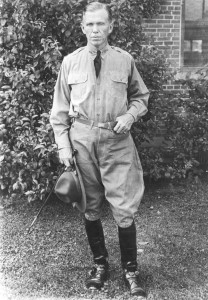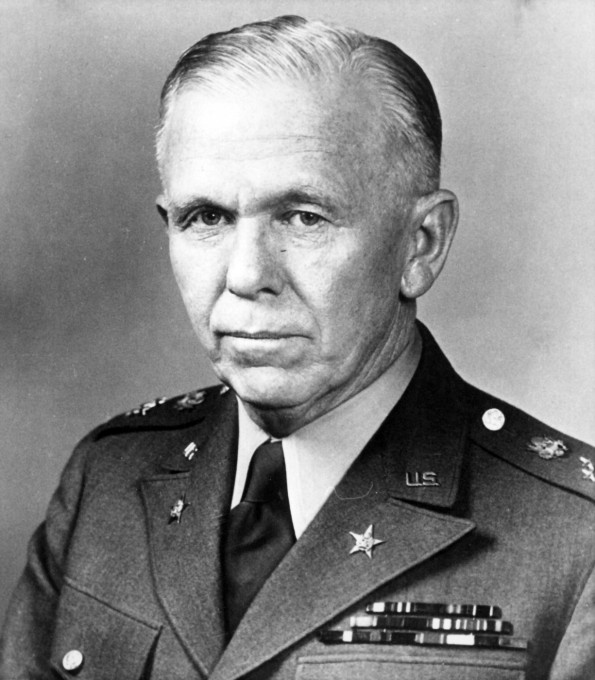Vancouver Barracks was the home of the Seventh Infantry Regiment, and war seemed a long way off when Gen. George C. Marshall arrived in 1936 as commanding officer of the fifth Brigade.
He was a brigadier general at the time and a World War I veteran.
The new officer spent much time visiting National Guard and Army reserves in the area. One of his duties also was supervising the Civillian Conservation Corps in the region. This was made up of men working in the woods on trails and other projects.
Marshall and his wife enjoyed outdoor activities in the area, and recalled later that Vancouver was one of their most pleasurable postings.
The most publicized incident involving Marshall at Vancouver was the enexpected arrival of three aviators from the Soviet Union. The fliers had hoped to reach the San Francisco Bay area in California, but landed instead at Pearson Field, just south of the barracks.
Marshall was host to the aviators and handled press relations relating to the visit.
In 1937, Marshall was commander of 14,000 troops on maneuvers at Fort Lewis.
He left the barracks in 1938 to join the Army general staff in Washington, D.C. Even before the United States entered World War II, Marshall was working on global military problems, and during the war he was chief military strategist for the Allies.
After the war the general was a special envoy to China, and as U.S. secretary of state he authored the Marshall Plan to aid Europe.
The building used for the general’s office in the 1930s has been renovated with other Officers Row structures and is known as the Marshall House.
